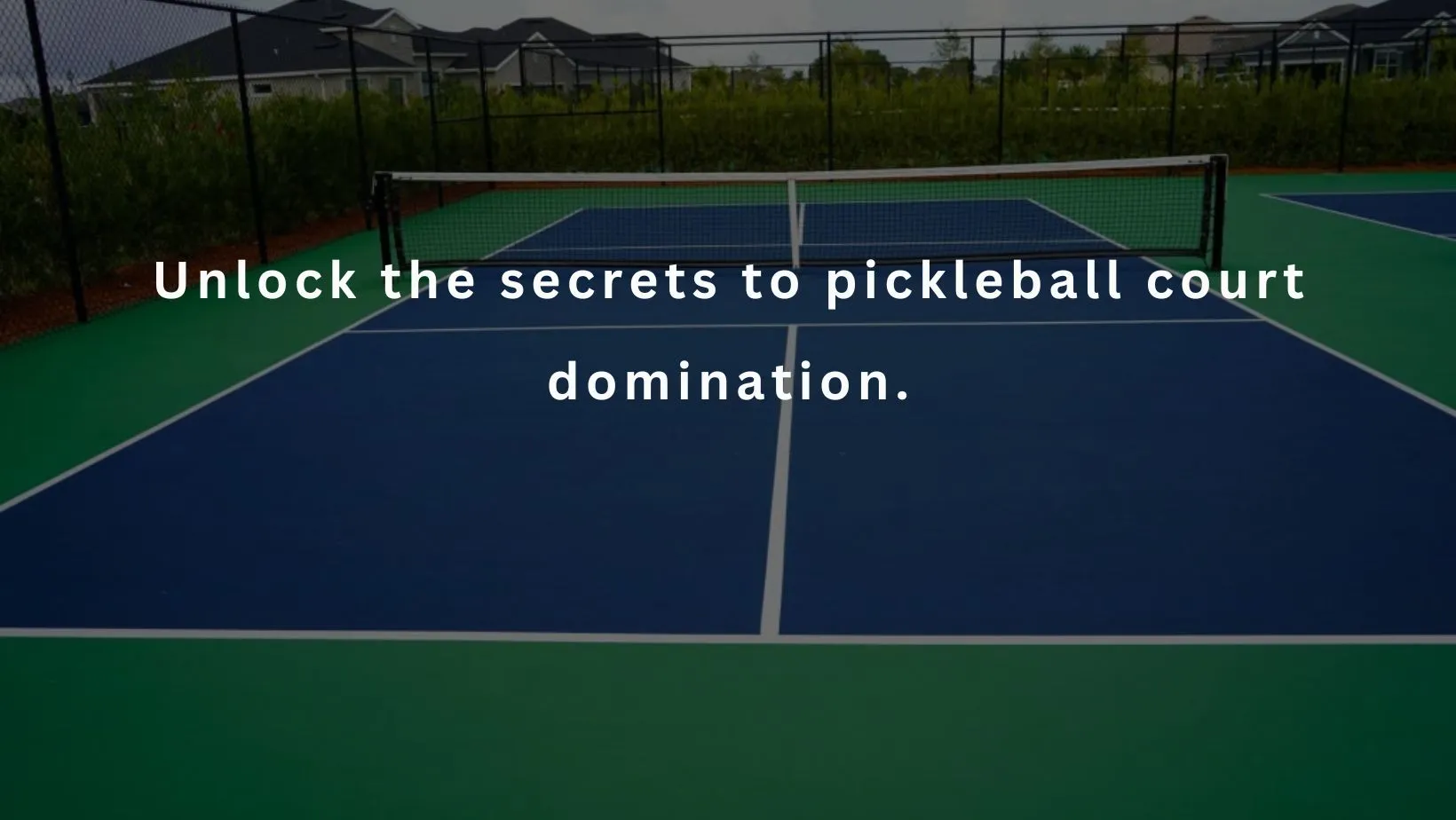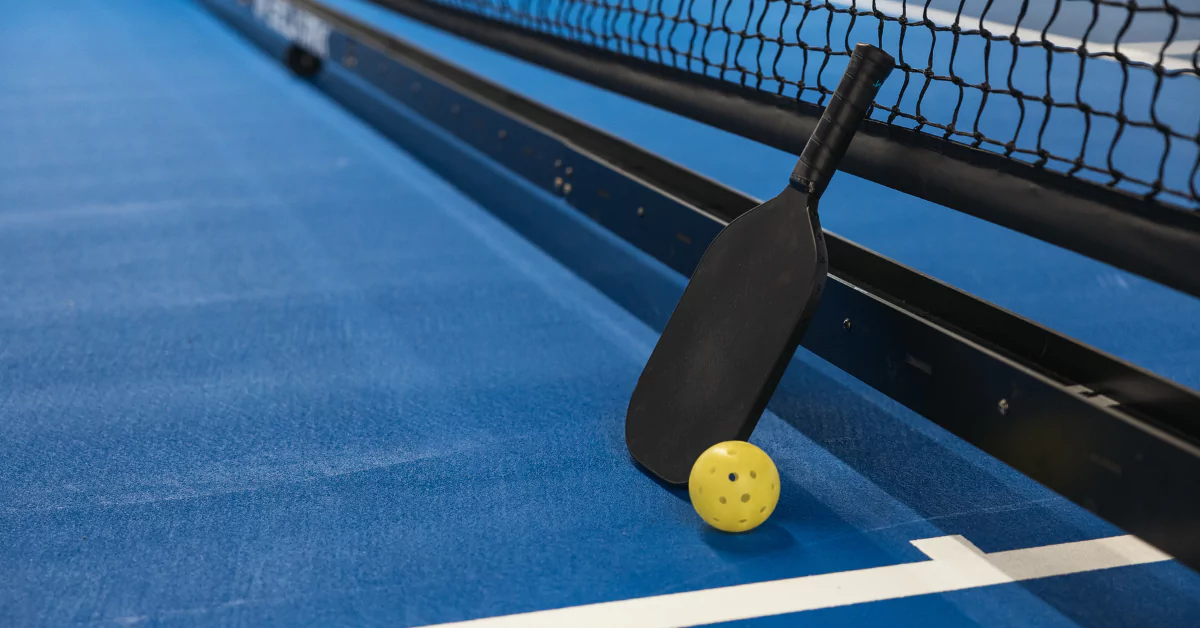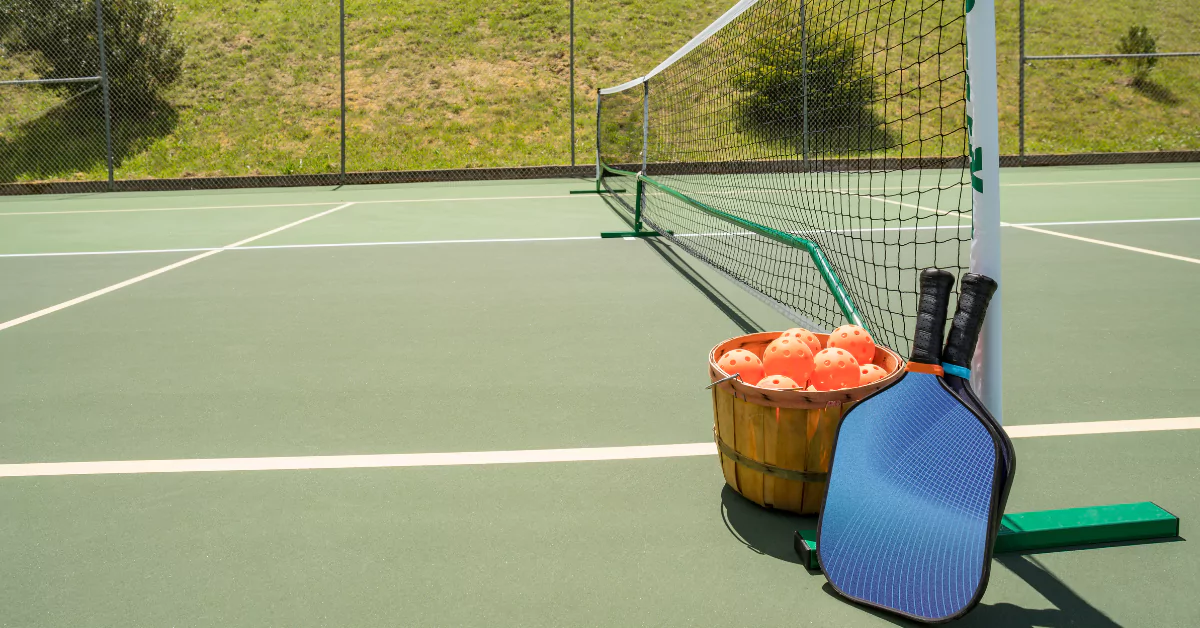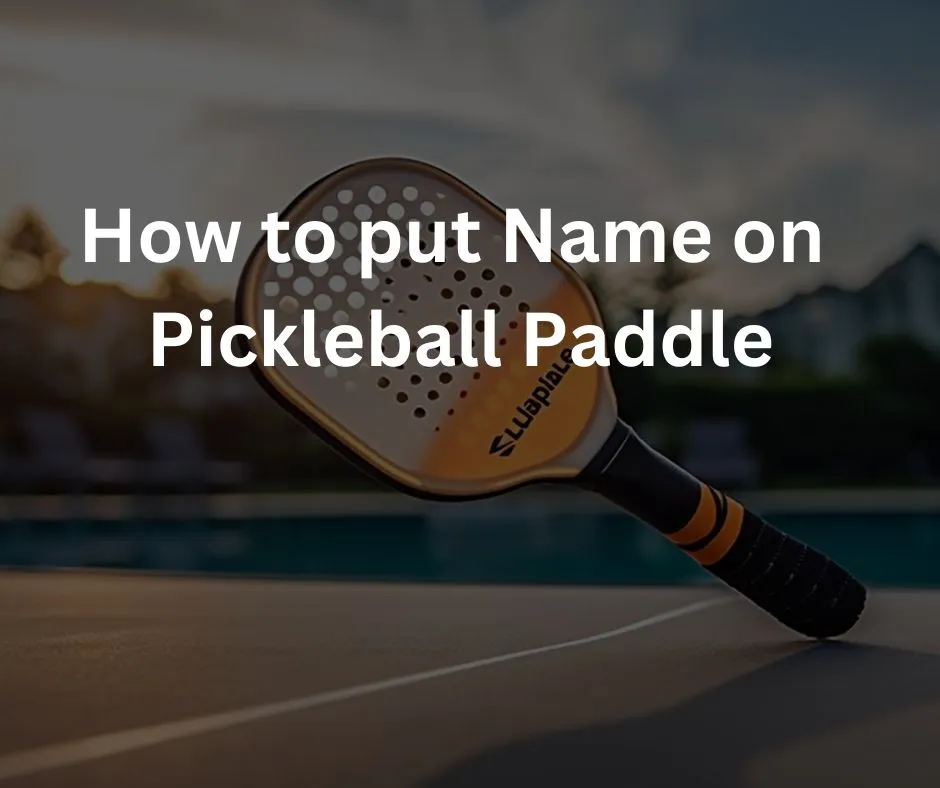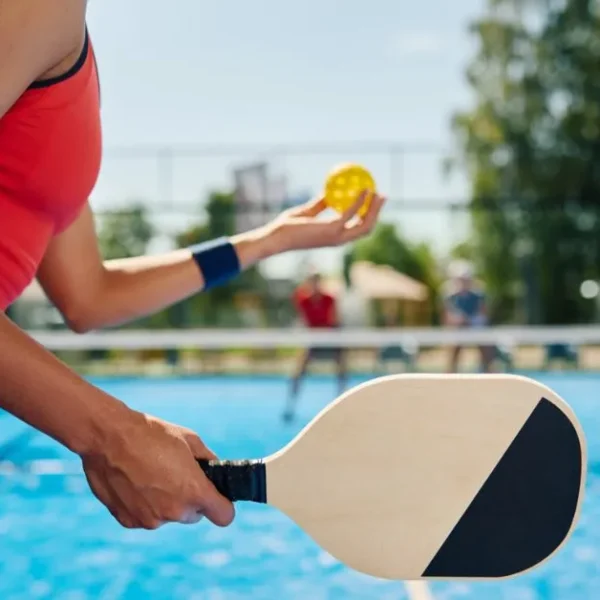Welcome to my expert guide on creating your own homemade pickleball court! If you’re a pickleball enthusiast and have a backyard space ready to be transformed, building your own court can be a fulfilling and exciting project. In this article, I will share with you my comprehensive tips on designing, constructing, and maintaining a safe and playable pickleball court that you will enjoy for years to come.
DIY Pickleball Court
Key Takeaways:
- Building a homemade pickleball court can be a fun and rewarding project for pickleball enthusiasts.
- Important considerations include court design, location, materials, construction process, and safety measures.
- With proper planning and execution, creating your own pickleball court can enhance your pickleball experience and provide a great space for family and friends to enjoy the sport.
Designing Your Homemade Pickleball Court
When it comes to building a homemade pickleball court, the design is an essential element to consider. You’ll want to ensure that the dimensions, layout, and surface materials are all appropriate for the sport.
Court Dimensions
The standard pickleball court size is 20 feet wide by 44 feet long, with a non-volley zone seven feet from the net on both sides. However, if you have limited space, you can adjust the size accordingly. Just keep in mind that the court should have enough room for players to move around freely and comfortably.
Layout
The layout of your court can vary depending on the available space and personal preference. However, the court should be symmetrical in shape and have clear boundary lines. You can use chalk or paint to mark the lines, or invest in pre-made court stencils for more professional-looking results.
Official Dimensions And Layout Of Court
Surface Materials
The surface materials you choose for your homemade pickleball court can greatly affect the playing experience. Common options include concrete, asphalt, and sports tiles. Concrete and asphalt are more affordable but can be hard on joints and have a higher risk of cracking. Sports tiles are more expensive but provide better shock absorption and durability.
Ultimately, the design of your homemade pickleball court should prioritize safety, functionality, and fun. By considering the court dimensions, layout, and surface materials, you can create a space that meets these criteria and enhances your pickleball gameplay.
Designing A Court: Creating The Perfect Sports Environment Pickleball Cabin
Selecting the Right Location for Your Court
One of the most important aspects of building a homemade pickleball court is selecting the right location. Before you begin constructing your court, take the time to carefully assess your backyard and consider the following factors:
- Available space: Ensure that you have enough space for a full-size pickleball court, which measures 20 x 44 feet. You will also need additional space around the court for fencing and player movement.
- Sun exposure: Aim to build your court in an area that receives an adequate amount of sunlight. A shady location may increase the risk of moss and algae growth on the court surface.
- Proximity to other amenities: Consider the location of other features in your backyard, such as trees, gardens, and swimming pools. You want to avoid building your court too close to these features, as it may cause damage to your court or other amenities during gameplay.
Once you have identified a suitable location, mark out the dimensions of your court using stakes and string. This will help you visualize the space and determine if there are any necessary adjustments to be made.
Section 4: Gathering the Necessary Materials
Building a homemade pickleball court requires a variety of materials to ensure its longevity and playability. Here are some essential items you’ll need:
| Item | Description |
|---|---|
| Fencing | A durable and weather-resistant fence to surround the court, preventing balls from straying and ensuring privacy. |
| Court Surface | The court surface should have good traction, be durable, and provide good ball bounce, with options including concrete, asphalt, or acrylic surfacing. |
| Pickleball Lines | The court lines should be painted with durable paint and be of the correct size according to official pickleball court dimensions (20 x 44 feet). |
| Net System | The net system should be stable and adjustable in height, with options ranging from portable net systems to permanent in-ground installations. |
When choosing your materials, keep in mind that durability and quality will be crucial in ensuring that your homemade pickleball court lasts for many years. Invest in high-quality materials for the best results, and consider alternate options, such as second-hand fencing or a DIY court surface, to save on costs.
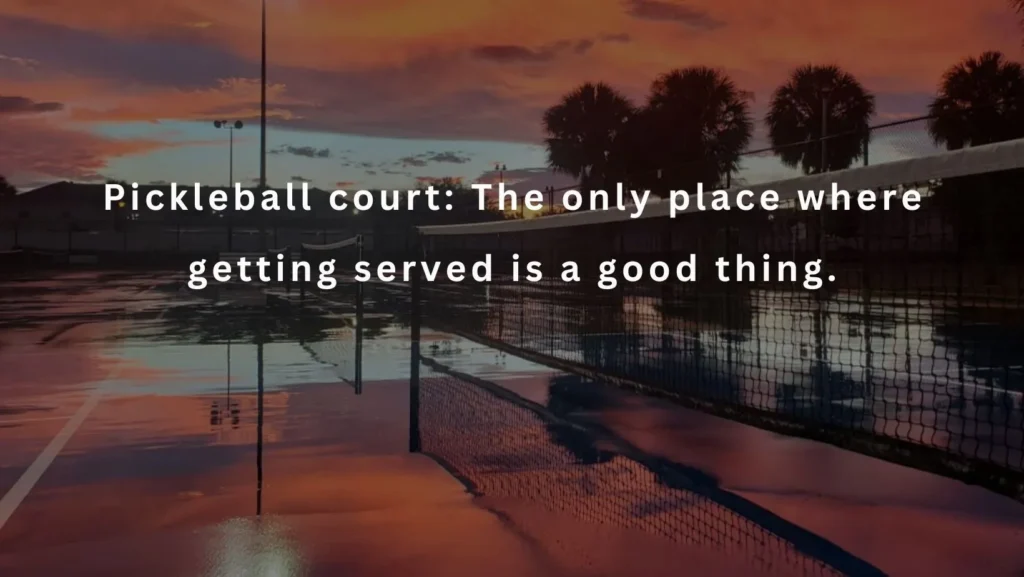
Step-by-Step Construction Process
Now that we have covered the important considerations and materials needed, let’s move on to the step-by-step process of building your homemade pickleball court. Remember to carefully follow these instructions to ensure that your court is safe and playable for all users.
Step 1: Clear the area
The first step is to clear the area where you want to construct your pickleball court. Remove any obstacles such as rocks, grass, or plants that may interfere with the court’s surface. Using a level, mark out where your court will be located.
Step 2: Install the fencing
Next, install the fencing around the perimeter of the court. The fencing should be at least 10 feet high and made of durable materials such as chain link or vinyl. Make sure to secure the fencing posts firmly into the ground.
Step 3: Lay the court surface
Once the fencing is in place, it’s time to lay the court surface. There are many options to choose from, such as concrete, asphalt, or plexiglass. Spread the chosen material evenly and level it with a screed board. Allow it to dry or cure according to the manufacturer’s instructions.
Step 4: Paint the lines
After the court surface has dried or cured, it’s time to paint the lines. Use a tape measure and chalk to mark out the lines accurately. Then, apply the paint with a roller or sprayer. Allow it to dry completely before removing the tape.
Step 5: Install the net system
Finally, install the net system in the middle of the court. The net should be 34 inches high at the center and secured to the fencing posts with brackets. Make sure the net is taut and level, and adjust as necessary.
And there you have it – your very own homemade pickleball court! Remember to maintain your court regularly to keep it in top condition for years of fun and enjoyment.
DIY & Guide To Building Your Backyard Pickleball Court 2023.
Making Your Court Playable and Safe
After constructing your homemade pickleball court, it’s important to ensure that it is both playable and safe for all users. Here are some essential tips to keep in mind:
Proper Line Painting
One key factor in making your court playable is ensuring that the lines are painted correctly. Use a measuring tape and chalk to mark the exact locations of the lines before painting them. Take your time and use high-quality paint to ensure that the lines are visible and long-lasting.
Maintaining the Court Surface
Another important aspect of making your court playable is maintaining the court surface. Regularly sweep and clean the surface to remove any debris or dirt. Repair any cracks or damage to the surface promptly to ensure a smooth and safe playing area.
Implementing Safety Measures
Lastly, it’s crucial to implement safety measures to prevent injuries. Install padding around any hard surfaces such as poles or fences. Place warning signs around the court to remind players to be mindful of their surroundings. Additionally, make sure that the net is properly secured and at the correct height to prevent any accidents.
By following these tips, you can ensure that your homemade pickleball court is both playable and safe for all users.
Pickleball Court Construction: Creating The Perfect Playing Surface
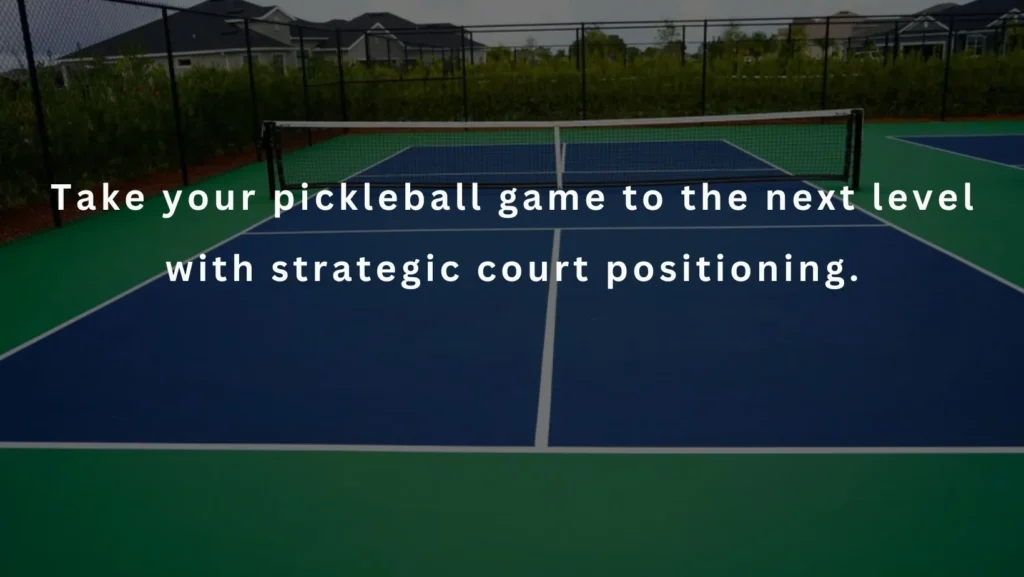
Adding Personal Touches to Your Court
Now that you’ve constructed your very own homemade pickleball court, it’s time to add some personal touches to make it truly unique. Whether you want to show off your favorite sports team or create a tranquil seating area, there are plenty of ways to make your court stand out.
Personalized Logos
One way to add a personal touch to your court is by designing a custom logo. This could include your family name, a favorite sports team, or even a graphic that represents your love for the game. You can have the logo painted directly onto the court surface or have it printed onto a banner to hang on the fence.
Seating Area
Adding a seating area to your backyard pickleball court is a fantastic way to make the space more comfortable for players and spectators alike. You can create a simple bench using cinder blocks and wooden boards, or invest in outdoor furniture such as chairs and a table. Don’t forget to provide shade with an umbrella or pergola to keep everyone cool on hot summer days.
Landscaping
Adding some landscaping to your court area can help create a more inviting and visually appealing environment. Plant colorful flowers or shrubs around the perimeter, or install raised garden beds filled with herbs and vegetables. You can even add some decorative stones or pavers to create a pathway leading to the court.
By adding personal touches to your homemade pickleball court, you can create a space that is not only functional but also reflects your personality and style. Get creative and have fun!
Conclusion
In conclusion, creating your very own homemade pickleball court can be a fun and rewarding experience. With the expert tips and guidance provided in this article, you now have a clear picture of the considerations involved in designing, constructing, and maintaining a backyard pickleball court.
By carefully selecting an appropriate location, gathering the necessary materials, and following the step-by-step construction process, you can create a durable and playable pickleball court that your family and friends will enjoy for years to come.
Don’t forget to add your personal touches, such as customized logos and seating areas, to make your court truly your own.
I encourage you to take on this exciting project and start playing pickleball in the comfort of your own backyard. Trust me, you won’t regret it!
FAQ
Q: How much space is needed for a homemade pickleball court?
A: The recommended minimum space for a pickleball court is 30 feet wide and 60 feet long. However, if you have more space available, it’s best to make the court a bit larger to allow for comfortable gameplay.
Q: What materials are needed for building a homemade pickleball court?
A: The essential materials for constructing a pickleball court include fencing, court surface materials (such as asphalt or concrete), court lines, and a net system. Additional materials like paint, stakes, and tools will also be necessary.
Q: How long does it take to build a homemade pickleball court?
A: The construction time depends on various factors, such as your experience level and the scale of the project. On average, it can take anywhere from a few weeks to a couple of months to complete the construction process.
Q: Can I build a pickleball court on any type of ground surface?
A: Ideally, you will want to build your homemade pickleball court on a flat and level surface. Concrete and asphalt are common choices, but if you have a grassy area, you can consider using a hard-packed gravel base for the court.
Q: How do I maintain the court surface of my homemade pickleball court?
A: Regular cleaning and sweeping, along with occasional pressure washing, will help keep the court surface in good condition. Repair any cracks or damage promptly, and consider applying a fresh coat of sealant every few years.
Q: Are there any safety precautions I should take when constructing a homemade pickleball court?
A: Safety should always be a priority. Ensure that the court is properly fenced off to prevent unauthorized access. Additionally, make sure the court surface is free from hazards, such as rocks or uneven areas, to minimize the risk of injuries.
Q: Can I customize the design of my homemade pickleball court?
A: Absolutely! You can add personal touches to your court to make it unique. Consider adding personalized logos or color schemes, seating areas for spectators, and even landscaping around the court for a visually appealing and inviting space.
